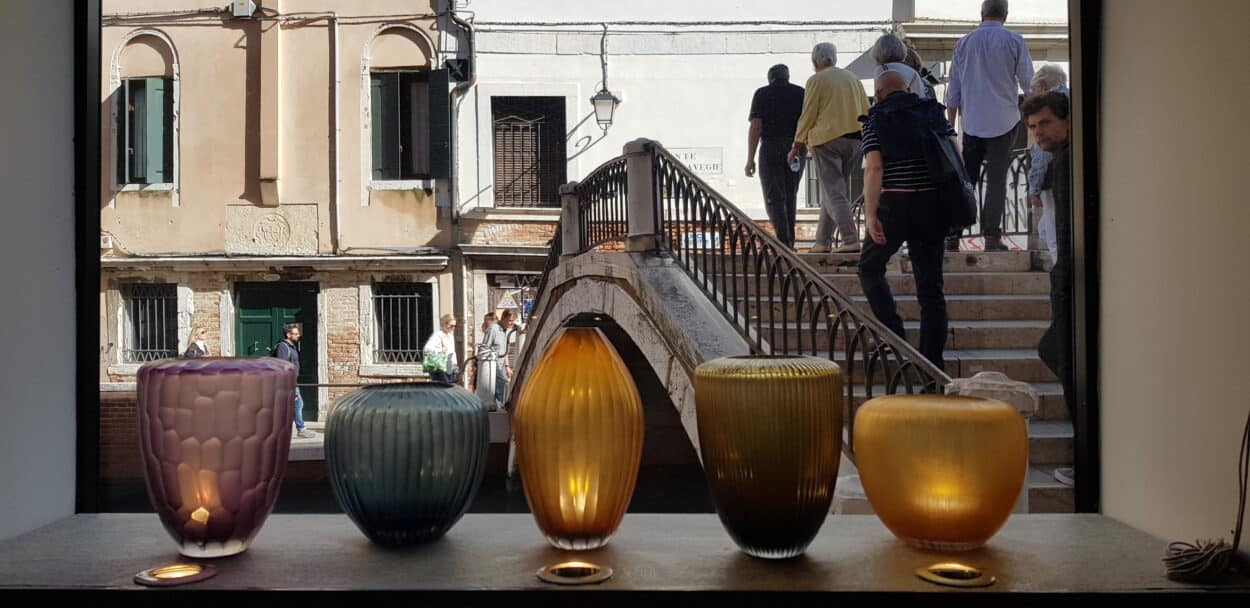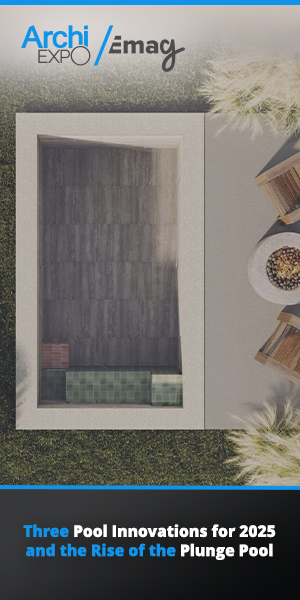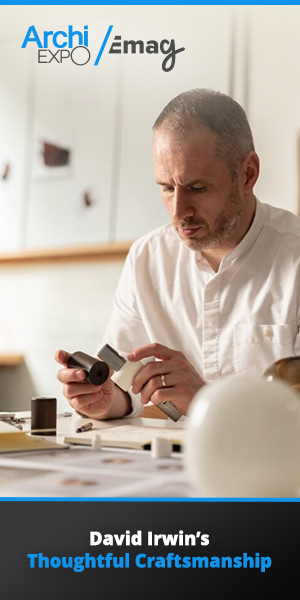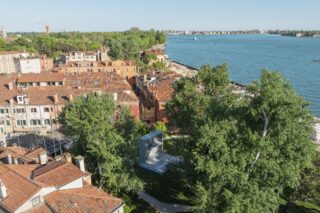In Venice, two main hubs and numerous guided tours feature artistic glass from Italian and international makers as part of The Italian Glass Week. Here are our favorites from the main hubs of the festival with a special mention of Massimo Micheluzzi.
September 17 – 25, Venice—Last year, the UN General Council approved an application to declare 2022 the UN International Year of Glass as a way to highlight how glass has contributed to sustainable societies, recent scientific and technical developments and its influence on art. The organizers of both The Venice Glass Week and Vision Milan Glass Week united to form The Italian Glass Weeks specifically for this year’s focus on glass, as part of the official program for the UN IYG.
READ: How glass is integral to long-term sustainability
As part of our coverage of the festival in Milan, a bi-yearly event dedicated primarily to industrial glass, we interviewed Carlo Santambrogio, lead architect of the design and architecture firm Santambrogio, known for constructing glass houses. The architect discussed how glass could be one of the most interesting materials for construction.
Following the week in Milan, the festival in Venice is dedicated instead to artistic glass. Venice has accumulated a 1000-year-old historical tradition of glassmaking, passed down through generations. Brought to life in 2017, The Venice Glass Week features hundreds of events every year dedicated to artistic glass across Venice, Murano and Mestre. Two main exhibitions, Venice HUB and HUB Under 35, promote Italian and international works; in the HUB Under 35, artists and designers age between 18 and 35.

Top 3 Glass Installations at Venice HUB
Glassblowing requires effort, dedication and passion. The Venice HUB, located at the Palazzo Loredan—historic home to the Intituto Veneto di Scienze, Lettere ed Arti—, features an exquisite display of intricately made glass objects. We’ve made a difficult selection of our top three favorites.
Twilight by Laetitia Jacquetton, while breathtakingly magnetic to the eye, evokes a sense of mystery and curiosity. Her pieces beg to question the reason behind which several Murano furnaces were made inactive around Christmas time and what it means for the future of the industry. The metaphorical implication behind the word ‘twilight’ of losing strength and approaching the end necessitates reflection. The Christmas closings of 2021, due to the Covid crisis, were followed by a summer closing of 2022 due to the Ukraine crisis; as August is the typical month during which all Murano furnaces close for maintenance work, several opted to remain closed.
When certain furnaces closed, the French glassblower, based in Murano, saved several fire-resistant bricks from the kilns that were due to be replaced. These collected bricks, to Jacquetton, represent the memory of the pieces previously made in the furnaces from which the bricks were retrieved. The layers of glass added to the bricks act as markers of time that stopped, per the glassblower’s poetic ideology. She used glass from the bottom of the crucible, resulting in marks on the glass—in Murano, these are considered defects, but she finds they contribute to an emotional response from viewers.
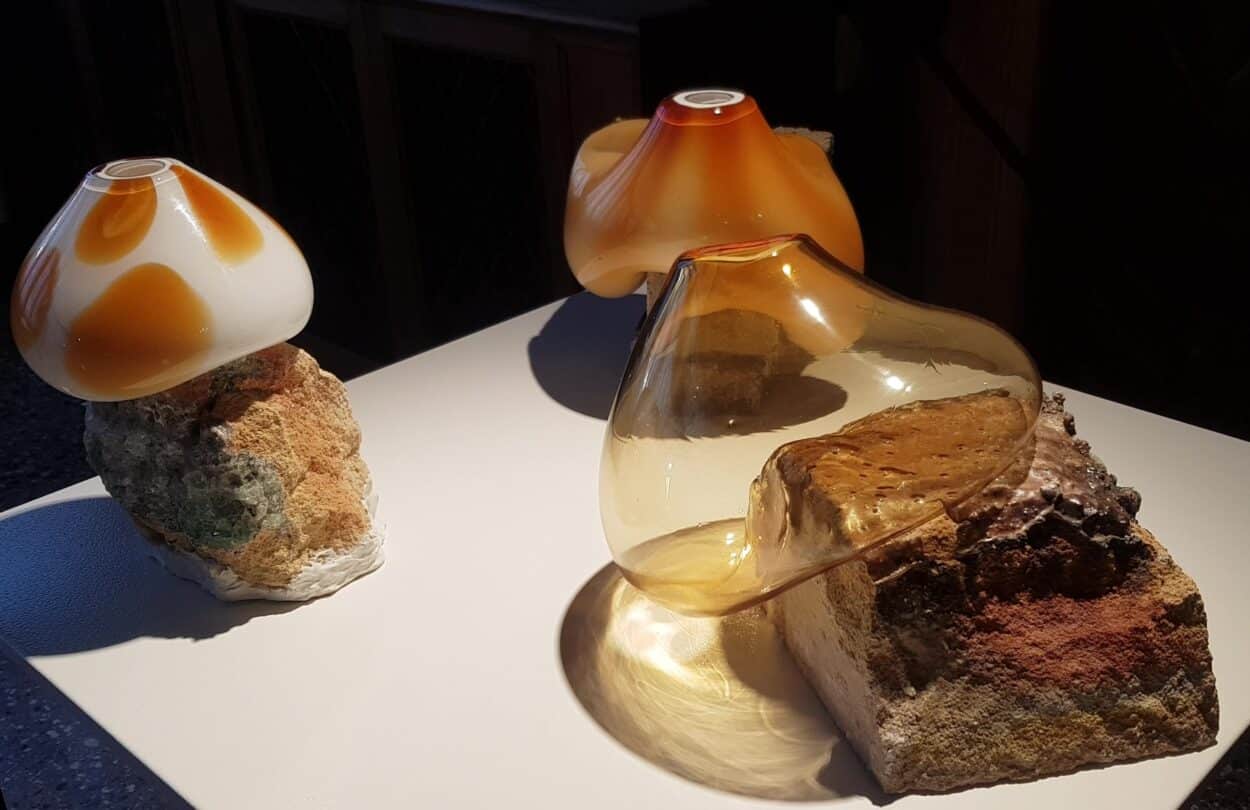
Similarly, in regard to time, Silence by Slovenia designer and artist Tanja Pak aims to portray the invisible line between here and there, between being and non-being—we’ll call it life and death—expressed through the placement of three pieces of molten glass in different shades of sky gray placed on a brightly lit white table. The artist describes it as a soft transition of saturation, the story of silence built within oneself while walking through time and being. The artist has recently been exploring the feelings of solitude, loneliness of the individual’s inner world, and Silence represents an individual’s lone journey of accepting and understanding the inevitable and undeniable “invisible line”.

The tenth edition of the Glass in Venice Award, promoted by the Veneto Institute of Sciences, Letters and Arts and by the Venice Civic Museums Foundation, goes to Michele Burato, Marcela Cernadas and the Carlo Donà Company. Since the 90s, Venice-born Michele Burato has been creating, in collaboration with the best Murano masters, blown pieces with essential shapes whose walls are enlivened by abstract glass “brushstrokes” of extraordinary impact. He began as a glass historian, collector and dealer until he entered the world of glass as a creator.
“I work like a painter of glass, as though I’m creating an image on a ‘canvas’, by fusing slices of vintage canes acquired from various Murano furnaces in a small household kiln,” Michele Burato said in an interview with ArchiExpo e-Magazine.
The glass panels he creates are then adapted to a 3D form in collaboration with a glass master with whom he’s worked since the beginning, a good friend of his. During the Glass Week, he displayed Street of Soul, a premier showing of his new works. Street of Soul is a window into the artist’s journey, a passage of his life, as he explained. The individual pieces The Sultan’s Breath, The Sultan’s Shadow and The Sultan’s Mind (from left to right in the images below) recall the history of the human during the span of life, from birth to death.

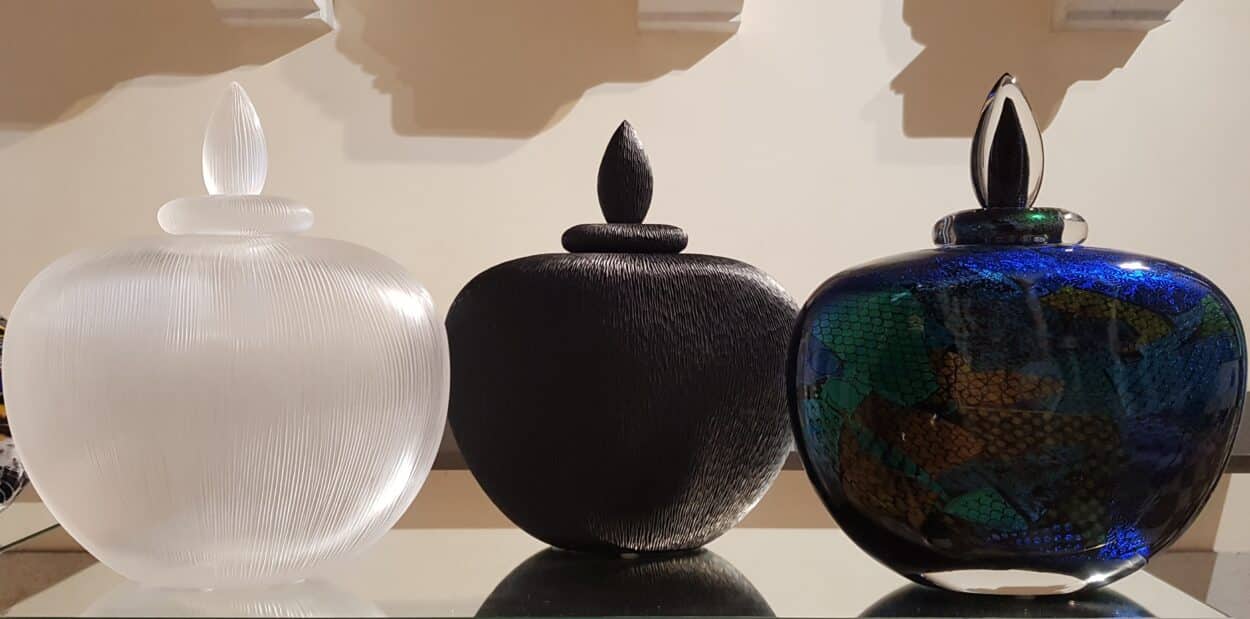
A brief mention of a few other pieces: Finally Together by Marja Hepo-aho, Transparent Decorative Objects by Melvin Anderson, Destruction by Samuel Weisenborn and Wander / Wonder by Ida Wieth.
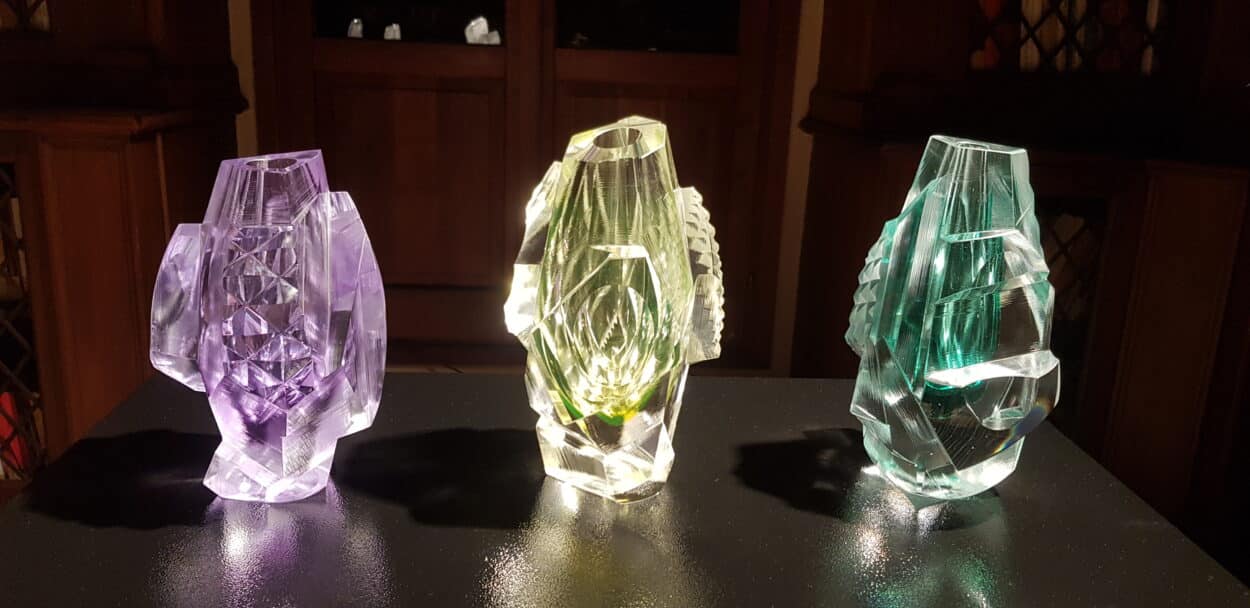

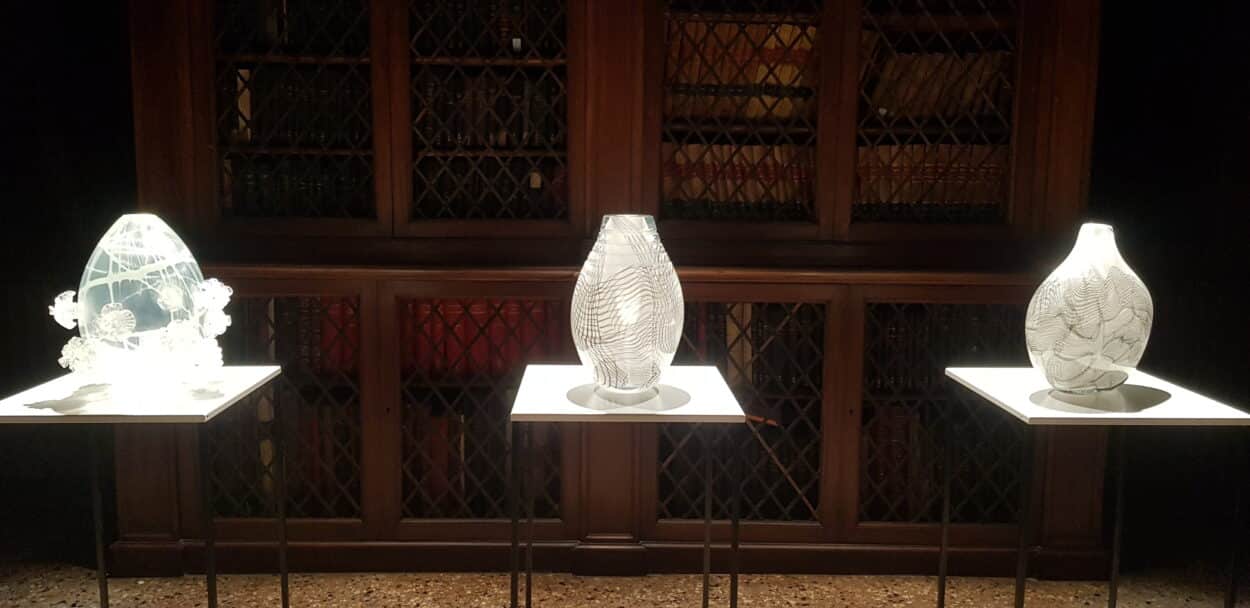
Hub Under 35: Glass Tiles with ‘Bloody Tears’ Fallen From the Sky
A few steps away from the main hub at the Palazzo Loredan, and an abrupt right turn before the majestic Accademia bridge, the Palazzo Giustinian Lolin hosted the selection of artists included in the Hub Under 35. One of the most evocative pieces on display was The Sky Is Bleeding, an installation of glass tiles by Iranian artist Elmira Abolhassani. These tiles revealed a bubbled glass texture, and the spotlights above played with other pieces placed on a higher table that resulted in glistening hues of yellow, orange and red on the tiles as though dashed sporadically along the surface. Still, the artist added splashes of red on the glass.
The artist described her project as a window to the sky, remarking on the importance of water in Persian culture, notably the traditional courtyards in Iran that host pools and how, during Nowruz, a vase with goldfish is used as a form of New Year’s greetings. She defines the year 2022 as a time ravaged by wars. Her piece represents the bloody tears falling from the sky, but the hint of orange reflected from an above-placed vase elicits the sense of hope she has that these drops will one day turn into goldfish as per the New Year’s tradition.



Special mention: Marco Signoretta and Hillary Heckard on their work entitled The Symphony of the Bees, Snæfellsnes Vessel by Rezzan Hasoglu of Studio Souhil and Shaped by Fire by Katrina Krotenko
READ: Our article on Murano, Massimo Micheluzzi and Sogni di Cristallo and watch our video report here.
